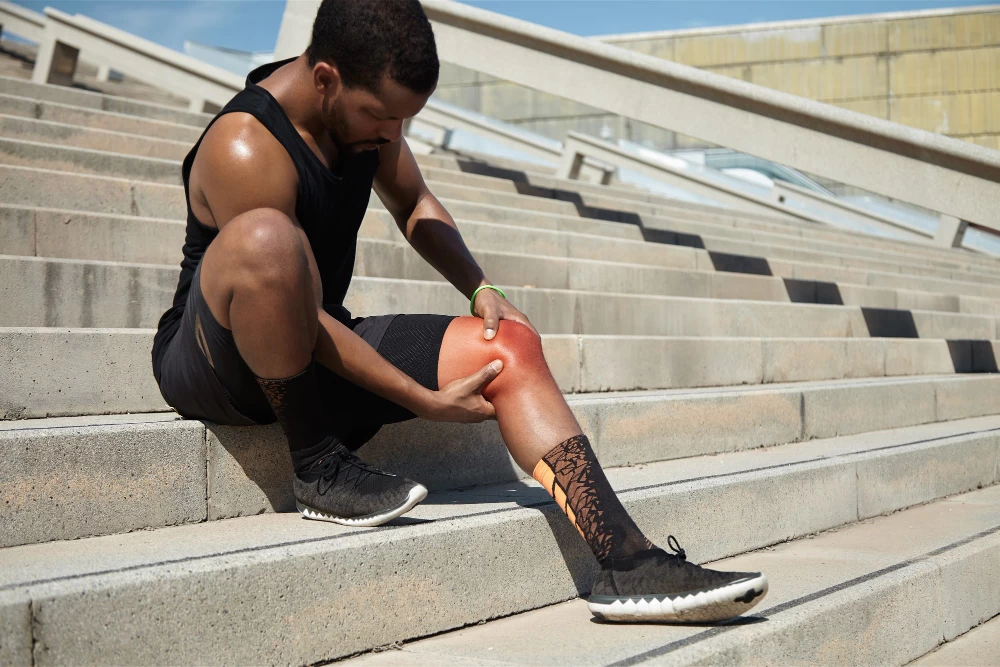
Meniscus
- Meniscus
- How is the Meniscus Diagnosed?
- Imaging Methods in Meniscus Diagnosis
- Meniscus Treatment
- What are the Causes of Meniscus Injuries?
- What Are the Symptoms of Meniscus Tears?
- What are the Types and Grades of Meniscus Tears?
- Non-Surgical Treatment of Meniscus Tears
- Surgical Treatment of Meniscus Tears
- Meniscus Surgery
The meniscus is a crescent-shaped fibrocartilage structure that acts as a shock absorber in the knee joint. It helps distribute the weight evenly across the joint and provides stability. There are two menisci on the inner surface (medial meniscus) and outer surface (lateral meniscus) of the joint in the knee.
- Medial meniscus: It is a C-shaped fibrocartilage structure located on the inside of the knee joint, between the thighbone (femur) and shin bone (tibia). Its function is to absorb shock and distribute the load across the knee joint, helping to reduce stress and wear on the knee joint. It can be injured by sudden bending or twisting movements, causing symptoms such as knee pain, swelling and difficulty walking. Treatment options for a damaged medial meniscus may include physical therapy, pain management or surgery, depending on the severity of the injury.
- Lateral meniscus: It is a crescent-shaped fibrocartilage structure that acts as a cushion between the thighbone (femur) and shinbone (tibia) in the knee. It helps to distribute the load on the knee, absorb shock and increase stability. The lateral meniscus is susceptible to injury and when damaged can cause pain and limit knee mobility.
How is the Meniscus Diagnosed?
A meniscus tear is typically diagnosed through a combination of physical examination, medical history review, and imaging tests. Physical examination may include checking for joint pain, swelling, stiffness, and range of motion. Imaging tests may include an X-ray, MRI, or ultrasound, which can provide detailed images of the knee and help determine the size and location of the tear. In some cases, the doctor may also perform arthroscopy, a minimally invasive surgical procedure that allows direct visual inspection of the joint.
Imaging Methods in Meniscus Diagnosis
Diagnosing meniscal injuries typically involves various imaging modalities, including:
- X-Ray: This is a basic imaging test that can identify bone fractures or other bone abnormalities, but it is not effective in detecting meniscal tears.
- Magnetic Resonance Imaging (MRI): This is the most common and effective imaging method to diagnose meniscal tears. It provides detailed images of soft tissues, including the meniscus, and can show the location and size of the tear.
- Ultrasound: This is a non-invasive imaging method that can be used to visualize the knee joint and surrounding soft tissues, including the meniscus.
- CT scan: This is less used for meniscus diagnosis, but may be helpful in some cases, especially if there is a concern about bone fractures or other bone abnormalities.
It is important to note that the choice of imaging modality depends on the clinical picture and the suspected cause of the injury. An orthopedist will typically use a combination of clinical examination and imaging tests to make a definitive diagnosis.
Meniscus Treatment
Treatment for a meniscus tear depends on the severity and location of the tear. In some cases, rest, ice, and physical therapy may be sufficient to manage symptoms. For more severe tears, surgical options include partial or complete removal of the damaged meniscus (menisectomy) or repairing the tear using stitches or other techniques. Post-operative rehabilitation and physical therapy are important for regaining strength and flexibility. It is important to discuss the best treatment options with a doctor.
What are the Causes of Meniscus Injuries?
Meniscus injuries are usually caused by sudden twists or turns while carrying weight, such as during sports activities or falls. Aging, degenerative changes, and overuse can also weaken the meniscus and make it more susceptible to injury. Other factors that can contribute to a meniscus injury include knee joint abnormalities, sudden impact, and disease or inflammation in the joint.
What Are the Symptoms of Meniscus Tears?
Symptoms of a meniscus tear typically include:
- Pain: localized in the knee, it can be sharp or painful
- Stiffness: difficulty straightening or bending the knee
- Swelling: The knee may swell within hours of injury
- Tenderness: touching or pressing the knee can be painful
- "Explosion" sensation: At the time of injury, some people report feeling a pop in their knee.
-Difficulty in knee movement: the knee may feel stuck or locked
- Indecisiveness: may feel like kneeling
It is important to remember that some meniscal tears may not cause any symptoms.
What are the Types and Grades of Meniscus Tears?
There are three types of meniscus tears:
- Clean or Stable Tear: Occurs along the meniscus fibers and does not extend to the outer edge of the meniscus.
- Degenerative Tear: Typically seen in older people with a frayed meniscus characterized by frayed or thinned edges.
- Complex Tear: It occurs when the tear extends to the outer edge of the meniscus and can include many different patterns.
Grades of meniscus tears:
- Grade 1: Small tear, fibers still intact
- Grade 2: Partial tear, fibers partially torn, but some adhered
- Grade 3: Full tear, the fibers are completely separated.

Non-Surgical Treatment of Meniscus Tears
Non-surgical treatment options for meniscal tears include:
- Rest and Ice: Resting the knee and applying ice can help reduce pain and swelling.
- Physical therapy: Physical therapy exercises can help improve knee strength and flexibility.
- Medicines: Medications recommended by the doctor can help relieve pain and reduce inflammation.
- Support or Knee Supports: Wearing a knee brace can help stabilize the knee and reduce pain.
- Injections: Cortisone injections can help reduce inflammation and relieve pain.
It's important to remember that not all meniscal tears require surgery, and the best treatment will depend on the type, location, and severity of the tear, as well as the person's age, activity level, and general health. A doctor should be consulted for an accurate diagnosis and appropriate treatment plan.
Surgical Treatment of Meniscus Tears
Meniscus tears are a common knee injury that can cause pain, swelling, and difficulty in knee movement. The surgical treatment of meniscal tears depends on several factors, including the size, location, and type of the tear, and the patient's age, general health, and activity level.
Traditionally, surgical treatment of a meniscus tear involves removing the damaged portion of the meniscus, known as a meniscectomy. However, this can lead to long-term knee problems such as arthritis. In recent years, minimally invasive techniques such as arthroscopic partial meniscectomy have become more popular as they allow greater preservation of the meniscus and faster healing.
Another surgical option is meniscus repair, which involves rejoining the torn edges of the meniscus. This approach is best for younger patients with acute, stable tears and is less commonly used for older patients or those with degenerative tears.
The decision about which surgical approach is best for a particular patient will be made by the patient and the orthopedic surgeon, taking into account the patient's general health, age, activity level, and the specific characteristics of the tear.
Meniscus Surgery
Surgery is typically performed arthroscopically, a minimally invasive surgical technique that uses small incisions and a camera to view the joint. The type of meniscus surgery will depend on the size, location and type of the tear and the patient's overall health and activity level. Possible meniscus surgery procedures include partial meniscectomy, complete meniscectomy, and meniscus repair.
Exercise and Physiotherapy After Meniscus Surgery
After meniscus surgery, it is important to follow the rehabilitation plan given by your doctor or physical therapist to ensure proper healing and prevent further injury. The aim of physiotherapy is to restore normal knee function and reduce pain and swelling.
A typical rehabilitation program includes:
- Light range of motion exercises: To regain knee flexibility and prevent stiffness.
- Strength exercises: To rebuild the muscles around the knee and improve balance.
- Aerobic exercises: To improve cardiovascular conditioning and help with weight control.
- Balance and proprioception exercises: To increase knee stability and reduce the risk of falling.
- Manual therapy: To reduce pain and swelling, improve joint mobility and accelerate the healing process.
It's important to listen to your body and only do what's comfortable, gradually increasing the intensity and difficulty of your workouts as you recover. You should avoid high-impact activities and contact sports until approved by your doctor.


